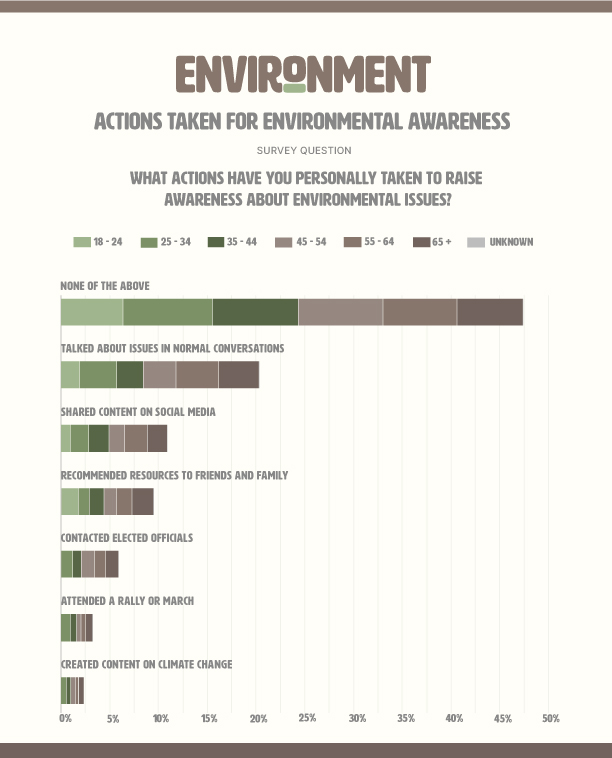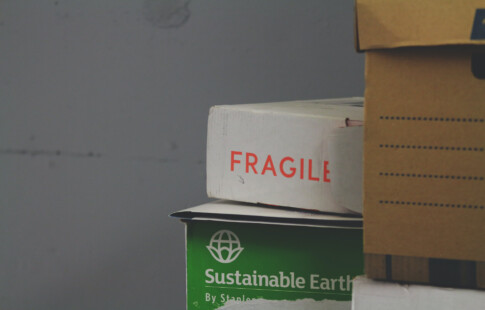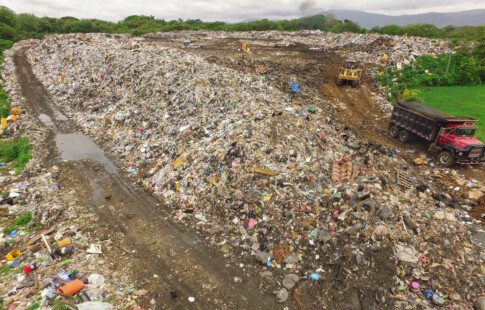
10 Surprising Ways You Can Raise Awareness About Environmental Issues
We are reader-supported. When you buy through links on our site, we may earn affiliate commission.
There’s no way around it —humans can only protect the planet through action. This effort can’t happen without educating the greater public and raising awareness about environmental issues — and that includes everyone, from parents to neighbors to strangers. How do people effectively and efficiently get the word out about the environment? Here are 10 ways to raise awareness about environmental issues.
1. Attend a Rally or March
A strike can be an effective way to draw attention. Consider movements like 2017’s People’s Climate March in Washington, D.C. The same thing happened in 2019 when millions of people worldwide gathered in their respective countries before the United Nations Climate Action Summit, and again in 2022 when Fridays for Future carried out global strikes in protest of global heating. These events received significant news coverage.
If you can’t find a rally or march to attend, you should talk to like-minded individuals to organize your own. There are climate change activists everywhere, so you won’t have to look very hard to find people who want to help. Be sure to promote your event early and often so that you can achieve a high turnout.
Rallies and marches can be especially effective when you have local issues related to climate that you could rally around. If you want to learn more about creating a successful rally or march, look no further than learning from many young climate activists who have both organized and attended rallies or marches to help our planet.
2. Use Social Media
We all know social media has power. Online platforms can work as tools to help you educate more people. It might not seem like much to share, like, and comment on posts, but you’d be surprised at how much influence those actions have. You only need to see one tweet to change your perspective.
Try using your online presence to the planet’s advantage. An easily-digestible post with accurate information can do wonders. If you don’t have time to create that content, you should look for social media accounts that promote sustainable living and discuss environmental topics. From there, you can follow these accounts and share their content.
Be careful what you share on social media, however. Some people have promoted sustainability while also taking tourist trips that are anything but sustainable and end up sending mixed messages to their followers. Spreading public awareness can also sometimes backfire, as in the case of slow lorises having an increasing demand for them as pets, which has put this animal in danger of extinction.
Research each topic and craft your messages carefully to have the greatest chance of making a positive change.
3. Contact Elected Officials
Our elected officials have more authority than anyone else. After all, they write and sign legislation that becomes law. It’s vital to put people in office who want to protect our planet. By contacting them, you can do your best as a constituent to raise awareness about environmental issues.
If you have an issue you want to address, you should contact local and state legislators via email or phone. They might already have a solution, but you need to hold them accountable either way. It’s also smart to learn about their backgrounds so you know whether to vote for them during the next election.
Tips for contacting elected officials include:
- Identify yourself: The first paragraph of your letter or email should identify you as a constituent. It should also briefly explain why you’re writing to the legislator.
- Keep it brief: Ideally, a letter or email should be one page long or less.
- Be original: There are plenty of pre-written letters you can simply sign and send to a legislator, but original correspondence helps you stand out from the crowd. Consider using a pre-written letter as a template to write your own unique message.
- Be succinct: Sometimes, less is more. Choose a maximum of three main points to address in your correspondence.
- Get personal: Does the legislation you’re writing about affect your life personally? If so, tell the legislator about it. Include a short story about how the legislation will affect you and your community.
- Be respectful: It’s fine to take a firm stance on an issue, but always keep your message respectful — even if you disagree with a legislator politically.
- Include your address: Many legislators are too busy to send a response. However, including your address gives them a chance to reply if they have time. It also solidifies the fact that you are a constituent.
4. Recommend Books and Movies
It’s not always easy to conceptualize climate change. This phenomenon doesn’t affect us in ways we can immediately see, hear or feel. The world might be getting warmer — but that’s not necessarily remarkable to the average person. As a result, you should try recommending media that helps your friends and family learn about climate change more tangibly.
Watch something like Our Planet or Before the Flood for your next movie night. You can also lend reads such as The Uninhabitable Earth and How to Prepare for Climate Change: A Practical Guide to Surviving the Chaos to your loved ones. These resources offer a more accessible and intriguing way for people to learn about climate change.
Reading is also a great way to help people of all ages challenge their thinking and learn from other opinions. Whether it’s encouraging your children to read about nature and wildlife or starting a book club in which you tackle the latest non-fiction books on climate and the environment, reading helps us all understand more about our place in the world.
5. Be Accommodating
There are times when activists can seem unapproachable. If you’re using buzzwords like “net zero” and “carbon footprint” without explaining them, you can’t expect everyone to listen to what you have to say. Your message won’t seem relatable. A person who adjusts their vocabulary accordingly will reach more people.
This method isn’t “dumbing down” specific concepts. It’s simply speaking to people in a language they understand. Try to incorporate more straightforward phrases into your vocabulary.
For example, instead of mentioning a company’s carbon footprint, you could talk about how much greenhouse gas — especially carbon dioxide — the business emits when manufacturing and shipping its products. Rather than saying a corporation is carbon neutral, explain that it removes just as much carbon dioxide from the atmosphere as it emits. These small changes can accommodate people who aren’t as well versed in climate policy as you are.
You can even share stories and anecdotes as a way to make things personal. These tactics will make a difference.
6. Write Articles and Create Videos
Do you have a creative streak? If so, you should consider putting out content to raise awareness about environmental issues. This method will be especially useful when you want to inspire hope or shine a light on unknown topics. There’s always room for more articles and videos about how people can make a difference.
You can use online platforms like blogs and YouTube to publish your content. Eventually, you should have a repository of content that helps raise awareness. We can never have too much information surrounding climate change.
Be sure to use your social media presence to promote your content. There’s a higher chance people will see everything that way. You can also reach out to publications to see whether you can be featured.
7. Learn the Nuances of Recycling and Composting
More people are taking advantage of curbside and city recycling programs, while others are engaging with modern composting methods because of environmentalist trends on social media. While these are severely impactful actions to create environmental awareness among your household and loved ones who visit, leading by the wrong example is frequently a byproduct of well-intended enthusiasm for climate action.
Many people need to research more before engaging with recycling or composting and end up doing them incorrectly. This is how wishcycling came into existence — putting something in recycling that you’re unsure about and hoping the facility takes care of it.
Actions like this, while framed with positive motivations, have harmful side effects. Inappropriate recyclable gum up machinery, causing breakdowns. Too many faults lead to decreased funding because they aren’t meeting metrics, potentially leading to dismantling city recycling altogether.
Composting operates similarly. Whether you use a countertop composter or a worm bin, it’s essential to show your household and visitors the suitable protocol. This way, if they are inspired to begin their climate activist journeys, they start on the right track.
8. Combating Consumerism and Capitalism
People’s purchasing habits are among the sneakiest yet impactful environmental issues of the modern era. Increased e-commerce caused shopping-related emissions to skyrocket. Influencer content on social media exacerbates this behavior, as they normalize excessive, frequent purchases. Raising awareness about this issue requires people to do a few things:
- Despite their convenience, actively boycott corporations with negative environmental impacts, such as Amazon, SHEIN, and Walmart.
- Unsubscribe and unfollow influencer content where most of their content is hauls or sponsorships for products with an adverse impact.
- Support local.
- Tell friends and family you want to avoid shopping as a hobby or a way to spend quality time.
- Have a secondhand-first mentality.
- Mend and repair instead of buying something new.
The constant need to spend and obtain material possessions is a thought process embedded in most developed nations. Overcoming this by practicing slow, intentional shopping practices leads to far less waste and condemns a system meant for environmental exploitation and labor crises.
9. Perform a Trash Audit
There is nothing that is going to make someone more aware of the waste they produce than a trash audit. Encourage your household or office to do one to raise awareness on several environmental issues, including single-use plastics, e-waste, and more.
Place sheets of paper with pens near all trash receptacles. Make everyone write down every item they throw away, whether a candy wrapper or an iPhone. Set a deadline for the audit to end — it could be a week or a month.
At the end of the period, everyone involved will know the items they throw away most. Repeated items, like coffee pods, Q-tips, or banana peels, could be catalysts for how to shave waste production. Each item can produce a goal or encourage an eco-friendly replacement. Otherwise, people may not understand precisely how much trash they throw away.
10. Prioritize Eco-Financial Responsibility
There are several ways to raise awareness about the environmental impact of where you put your money and investments. Let’s start with personal spending.
The perfect way to tackle this issue is to take your money from chain banks and place it in local or eco-friendly institutions. Most banks benefit from fossil fuel investments or other questionable initiatives — putting your money in these businesses indirectly supports environmental destruction. The more people switch to local, climate-aware banks, the more toxic banks struggle to support their dangerous interests.
Additionally, investments have a carbon footprint too. Many people discuss their investment portfolios and how well the S&P 500 treats them. Though index funds and other assets may be reliable because you’re supporting successful companies, many of these organizations have horrific environmental impacts. Numerous top-performing enterprises do little to curb their emissions for ever-increasing profits.
Green investing is a novel and eco-conscious way to put money toward environmentally cognizant projects and companies. Would you instead put your money toward green energy innovations or a tech company illegally dumping e-waste in underdeveloped regions?
The Importance of Action
Even though we all know the importance of taking action for the environment, how many of us do anything about it? Knowing what to do is just the first step — we need to take that knowledge and turn it into action.
According to Yale’s 2021 climate opinions map, 72% of American adults believe global warming is happening. Yet how many Americans are taking steps based on these beliefs? We conducted a survey of the American public to find out how many are taking action to raise awareness for the environment. Here are the results.

According to our survey, nearly 50% of Americans have taken zero action to raise environmental awareness. This indicates that even though many might recognize, in theory, the importance of protecting the environment, far fewer are going out of their way to support the idea. But if we want real change to happen, we need to start living out our beliefs today.
Ways to Raise Awareness About Environmental Issues
It’s essential for people who care for the planet to raise awareness about climate change. If we want to protect the Earth, we need everyone’s participation. Consider exploring these ideas to help you speak up and educate others. Your efforts can not only help inspire others to act but also change the future of our world and everyone in it.
Last updated on February 28, 2024
Share on
Like what you read? Join other Environment.co readers!
Get the latest updates on our planet by subscribing to the Environment.co newsletter!
About the author
Jane Marsh
Starting from an early age, Jane Marsh loved all animals and became a budding environmentalist. Now, Jane works as the Editor-in-Chief of Environment.co where she covers topics related to climate policy, renewable energy, the food industry, and more.





